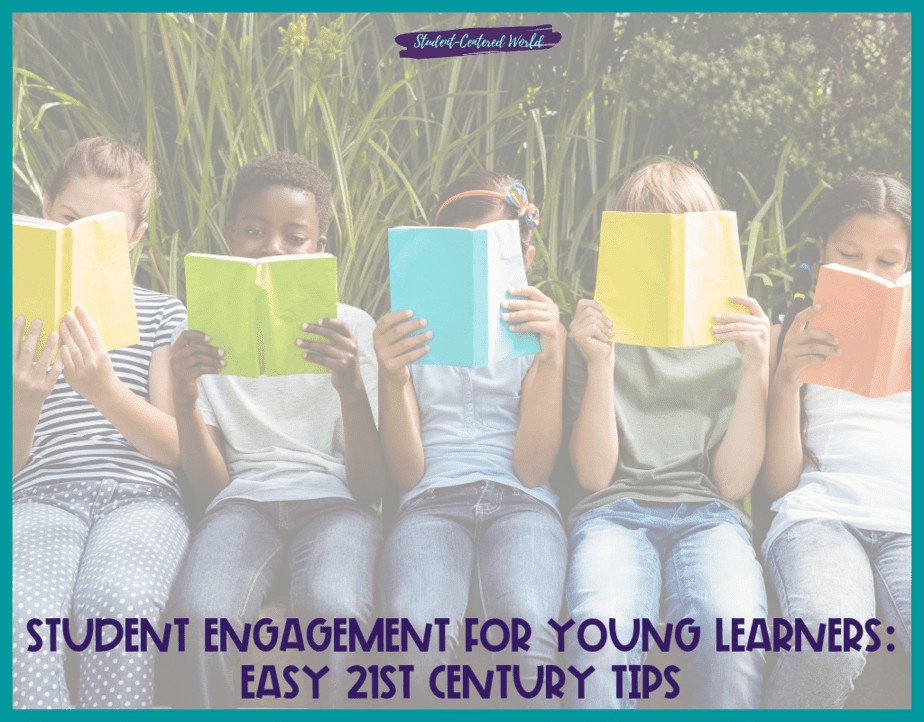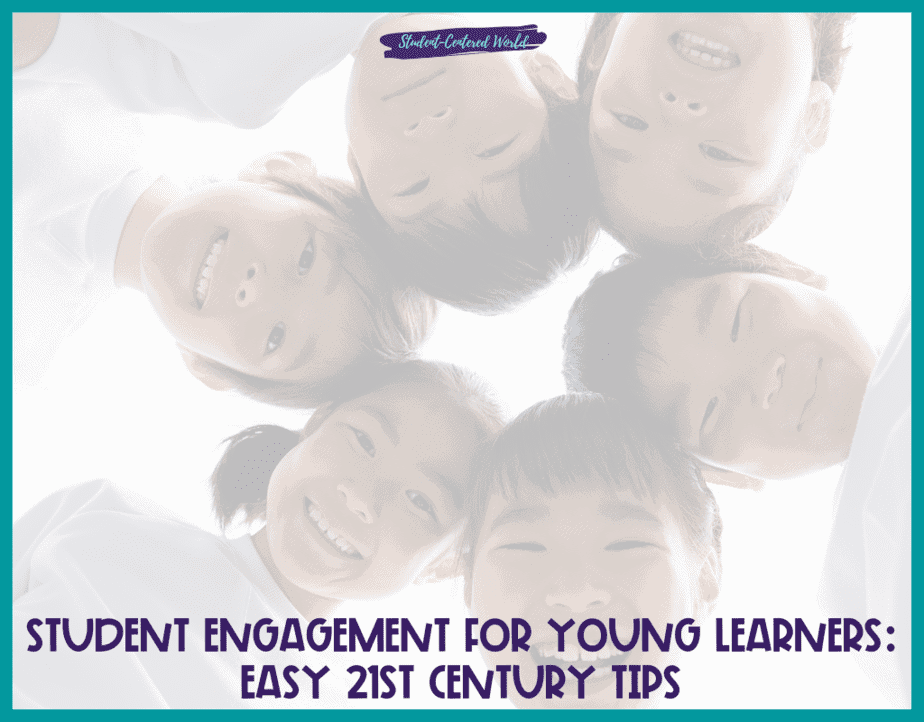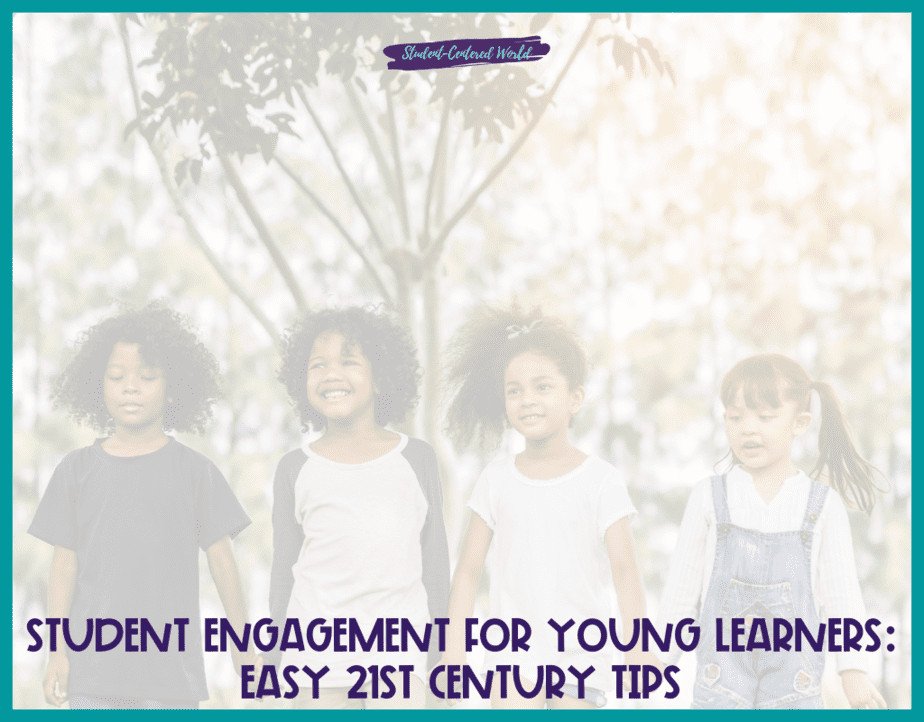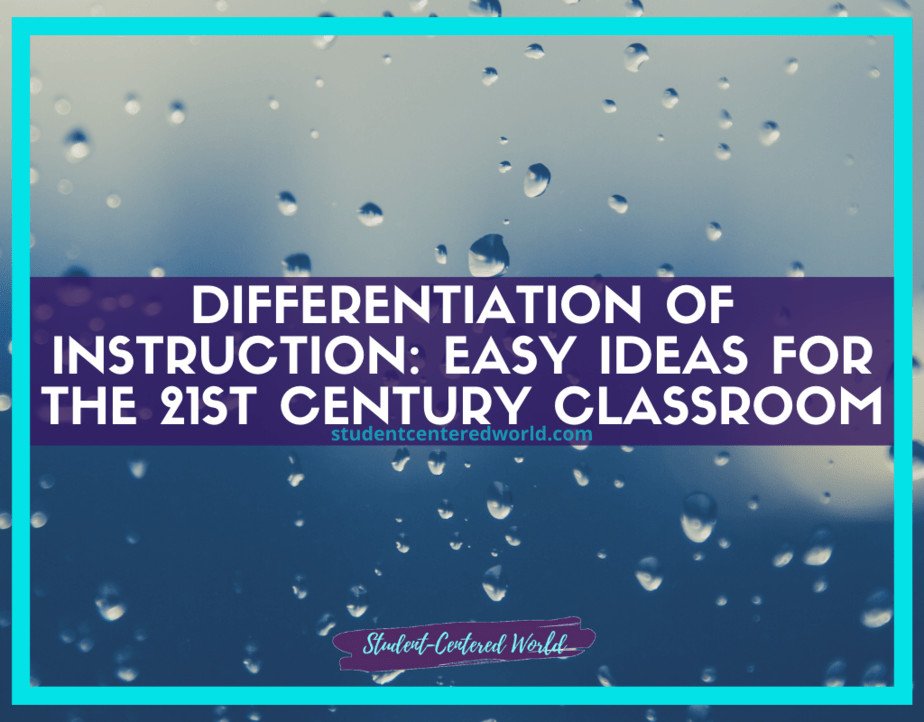Student Engagement for Young Learners: Easy 21st Century Tips
Student engagement for young learners can certainly be a challenge. I once heard teaching being correlated to “herding cats” and I couldn’t help but laugh. Add in the element of small children just learning how to interact with one another and what social and societal norms are and you have a recipe for quite the mishmash. However, student engagement for young learners doesn’t have to be difficult with the right plan in place.
The trick is to create excitement for learning, focus on one activity at a time, involve all students with the activity by speaking in clear and simple language, and reward students often and immediately.
Another big challenge for teachers of young learners is understanding the difference between what they know and what their students know. If you can keep this in mind while teaching your students, you will avoid some major frustrations.
Children that age have a certain understanding of the world around them and it can be challenging to understand this as an adult.
Also, they need help from their teachers in emotional areas. Kids those ages are learning about how to deal with things like frustration, aggression, anger, and other emotions that can lead to tantrums and misbehavior.
The younger the kids, the more you need to help them in learning how to behave.
At this age, children are really beginning their academic journey. They are starting to develop an understanding of numbers, letters, language structure, sounds, social skills, etc. With so many variables in play, how can a teacher find consistent and “second nature” ways to consistently get student engagement for young learners?
Start with the basics of student engagement for young learners.
Make it Natural
It is important to start at the beginning and make student engagement for young learners as natural as possible.
Start by telling your students what they are going to be doing during instruction. Not only should you tell them, but you should also follow through with the lesson and do the activity first without giving hints or examples. This way, when it is time for the students to try it themselves, they will be a little more confident in their abilities and understanding.
You may think you’re going over the instructions enough by telling them what is going to happen, but don’t forget that young learners listen differently than adults do. Their attention spans are much shorter as well as their focus span, so repetition can help a lot.
Also, make sure to give your students a warning that it is time to begin the lesson or activity. You don’t want them to be caught off guard and have a situation on their hands.
In terms of student engagement for young learners, it is important to keep them involved throughout the entire lesson. Probably one of the biggest problems I see teachers run into, especially in lower elementary grades, is that the students don’t feel like they are doing anything or learning about what they should be learning about. They simply get bored and tune out. Even if it is something as simple as practicing sight words, if the students are engaged with what you are doing, it is much more likely that they will learn without even trying.

This way of student engagement for young learners can be applied to just about any area of instruction. To help students become involved in their own learning environment, teachers can ask them questions about what they have learned or are learning. If you see a student engaged in an activity and looking like they are really enjoying themselves, pull out that question at just the right moment.
Even though asking questions to students for this purpose may be beneficial, it should only be used when that is what you want them to take away from your lesson. You don’t want to overwhelm young learners by asking too many questions too often.
When you are teaching young learners, it is important to make sure they are following instructions and staying on task, especially for independent work time. Sometimes, if students aren’t used to having these kinds of tasks where they need to focus on their own work or activities, they can easily get distracted which will result in a young learner not completing their work.
So, for this purpose of student engagement for young learners, it is important to give them as much practice with task time as you can. Make sure that they are comfortable with what they are doing and help them stay focused throughout the entire time if necessary. This way they’ll be more confident in their abilities and will continue to do their own work without your input.
Use clear and simple language
At this age, children are just starting to learn the basics of communication, so it is important to use language that they can begin understanding.
Avoid using phrases or words that are too long, are too wordy, or are not commonly used in everyday life. Use short, concise sentences. Also, always explain what you mean by the words you use and how to say them.
When speaking directly with your students, always look them in the eyes and try to use simple words or phrases they can repeat back to you. If they say something, don’t just reply with “yes” or “no.” Elaborate on what they said by giving specific details.
Although it may be tempting to talk to your students like they are peers, talking more formally shows your students that you are the teacher and they are the learner.
When giving instructions to your students, don’t assume it is obvious what needs to be done. Always explain to them exactly what they should do, but also tell them why doing this activity will help them understand something else.
When it comes to student engagement for young learners, the language you use when speaking with your students is everything.
For example, if you say “put your green crayon next to the red one” instead of “put your red crayon next to its friend, the green one,” young learners will feel more connected to their work and engaged in the task at hand.
It is essential for teachers working with young learners to make sure the language they use when speaking to students is clear and well-defined.
By avoiding specific terminology, overly wordy phrases, and long sentences, teachers can help their students feel more comfortable in an academic setting while encouraging them to explore new concepts that they might have been afraid of before. The more comfortable they feel, the more success you will see in student engagement for young learners.

Make it Fun
The best way to get student engagement for young learners is making sure they enjoy the activity and using skills that they enjoy learning.
Adjust the language of instruction based on your students’ age, use student-friendly instructional posters with images instead of words, practice arts and crafts projects, bring in books and items that will teach your students about the world around them, and provide opportunities for your students to meet with guest speakers who can teach them something they wouldn’t normally learn.
Be creative in how you use activities to engage your young learners. It doesn’t always have to be a lesson or something educational. You can also bring in outside resources and examples they wouldn’t normally see and discuss them.
You can also take advantage of holidays, festivals, or other events to get your students excited about instruction. During the Chinese New Year, for example, you could talk about what children in China receive as gifts on that day or what decorations people put up around their houses. You could even bring in some food and ask them to compare it to the food they eat on a normal day at school.
Who knows? Maybe your students will learn something new about their cultural background that could lead to an interesting discussion!
When it comes to student engagement for young learners, you have to remember that not all students learn the same way. Make sure you know what works for your student population and make sure you provide a variety of activities for them to engage with.
Kids need us as instructors to engage them in what they’re learning, but we also need them – to be excited about instruction. We need our students as engaged in the learning process as they are engaged in what is being taught.
So make it fun! There are plenty of ways to make your lessons engaging, even if you have a young learner. Just keep in mind that not every lesson has to be done with classroom management, task cards, or other dry activities. Sometimes it can take the fun out of the lesson if you immediately think “task cards” when it comes to student engagement.
Incorporate Movement Wherever Possible
Get them involved with learning by using games and activities that will get their bodies moving as well as their brains. This is huge in successful student engagement for young learners.
Teach foreign languages that require students to demonstrate their knowledge through physical movement. Bring in music and let them participate in dances and singing songs from their culture.
You can also incorporate sports and games they practice at school into the classroom, such as tag or soccer. Not only will this help energy levels stay high, but it will also help the children learn how to work together and communicate with each other.
While some teachers hesitate to incorporate too much movement for fear that they will lose control of the classroom, in terms of student engagement for young learners, it is essential. By having your students move around as much as possible, you will increase their chances of being engaged, active learners.
You can also bring in some “Brain Breaks” that have been specially designed for children to incorporate movement into the classroom without disrupting their routine. They include simple activities such as having students stand up and stretch, play a quick game of finger Twister, or tell a riddle.
There is so much data out there that shows the benefits of movement to our students (because frankly, they’re not getting enough movement outside of the classroom like in previous generations, and that leads to a lack of focus at school). No matter what your educational philosophy, movement can help our students learn better and are vital in terms of student engagement for young learners.

Make the Most of Your Tools
As a teacher, you have a lot of tools at your disposal that you can use to help your students learn and rock student engagement for young learners. These could be books, songs, videos, games, arts and crafts activities, food items – anything that you find valuable in teaching your students.
Take advantage of what is available to you by using these different resources to make lessons interesting for young learners. If you do not have much because your school cannot afford better materials, don’t think it is the end of the world. Use what you have and make it work for you!
You can also take advantage of technology to make your students more engaged – especially with mobile devices and apps becoming so popular, there is a lot of free material available online that you could bring up on a computer or an interactive whiteboard. Just search for “educational apps” on your phone or tablet to find tons of free materials you can use in the classroom!
You don’t always need fancy toys and lessons geared specifically for young learners. Sometimes, you can make do with what you have; just put a little creativity into it and see how far you get!
Do some research online to find free educational resources and examples of lesson plans that help student engagement for young learners.
Make it Memorable
No matter how fantastic your lessons are, they will not stick in the children’s minds if you do not keep them interested and provide opportunities for future recall.
Make the class dynamic by talking to students, answering their questions, and having them talk about what you are teaching. Let them ask you anything they like; make it a discussion instead of a lecture where all they do is listen to you talk at length!
Speak with your kids slowly and clearly; use simple sentences and avoid difficult words to ensure they understand what you mean.
If you notice a child is struggling to keep up or pay attention, don’t force them to listen – deal with the issue later when everyone has had a chance to refresh their minds and calm down.
Keep your lessons short and sweet, but make sure they leave strong impacts on your students!
Remember to take a break now and then to give the kids a chance to relax before diving back into your lesson. This will keep them interested in what you are teaching at all times, even if they seem exhausted after an exciting game of musical chairs.
When planning for lessons, make sure everything is ready beforehand so that all you have to do is read the notes and present them to your students. Doing so will let you be more confident in what you are saying, which will help the class pay more attention.
Don’t think that just because they’re young they won’t listen to you. If you give them strong reasons to care about what you’re teaching, they will listen to you no matter what.
Don’t be afraid of taking risks; if an activity doesn’t work out the way you intended, try something else! Teaching is all about trial and error, after all, until you find what works for your students.
Just make sure to take breaks every now and then so that their brains don’t get tired of learning!
Switch It Up Often
If you give your students the same type of lesson every day, it will get boring for them and it will completely derail your student engagement for young learners plan. To keep the fun in learning, switch up what you are doing constantly – vary the exercises, change where students sit or move around if necessary, adjust how long each class lasts, and incorporate different teaching tools.
Even changing the tone of your voice or what you emphasize can make a huge difference in lessons. Sometimes, all that is needed to wake up a classroom full of sleepyheads is a slightly different sentence structure – try it out and see how they react!
The success of every lesson plan only begins with your students’ attention; it needs to end with their eagerness to talk about what you taught them and quickly apply the skills they learned.
Make sure your lessons are memorable by making them dynamic, short, and varied – that way, kids will definitely remember whatever it is you’re trying to teach them!
Stop Driving the Teacher Struggle Bus
Are you struggling with student engagement, apathy, or keeping your class on track?
💫💫 There’s hope! 💫💫
Join my free teacher workshop “Choosing Choice” and in just 60 minutes, you’ll craft a practical plan to revitalize your teaching. Discover the magic of student choice in boosting engagement, gain quick implementation ideas, and explore strategies for year-long success.
Unlike overwhelming workshops, my approach guides you in real-time, providing more classroom options, reducing stress, and giving you more personal time.
Plus, you’ll earn a 1-hour professional development certificate and have 7 days of access.
Don’t miss this chance to transform your teaching; click below to secure your spot now!






